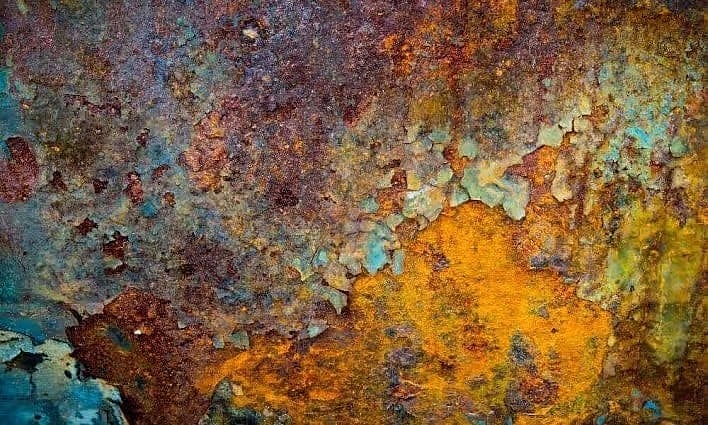
Most forms of corrosion are easy to detect. Whether it’s the cracking, the discoloration, or the rust, there’s something that gives it away. But there are some forms of corrosion that are notoriously sneaky. These forms of corrosion wreak havoc on components while sneaking under the radar. Often, components will fail with little to no warning, leaving you shocked and wondering, “What happened here?”
One such form of corrosion is crevice corrosion, which forms in small, secluded areas and spreads to areas that aren’t easily visible. While crevice corrosion is difficult to detect, you can still catch it in the early stages if you’re astute and perseverant. In this guide to recognizing and preventing crevice corrosion, we’ll run you through the basics of crevice corrosion and teach you how to effectively spot and prevent it. Let’s get started.
Crevice corrosion, also known as deposit or gasket corrosion, is a localized form of corrosion that attacks the gap, or crevice, between joined surfaces. It can affect both metal-to-metal and metal-to-non-metal crevices. When left unchecked, crevice corrosion can cause material cracking and eventual component or structural failure.
The next step in recognizing and preventing crevice corrosion is understanding what causes it. Crevice corrosion occurs due to differing chemical compositions at certain points near joined surfaces. This difference in chemical composition happens when air, water, or another corrosive element seeps into a small crevice between materials and becomes trapped there.
This stagnation causes a chemical reaction that depletes the region of oxygen and floods the crevice with positive metal ions, turning the crevice into an anode. Then, negative ions balance out the flood of positive ions, creating an acid that attacks and eats away at one or both of the materials’ protective oxide film.
Many people assume that crevice corrosion and pitting corrosion are the same things because they work and present in similar ways. Both forms of corrosion happen due to the degradation of a material’s protective oxide film. Also, they can both cause pit formation. However, pitting corrosion affects the entire surface of a metal, whereas crevice corrosion exclusively affects the area in and around crevices. Pitting corrosion is often a more severe type; however, crevice corrosion is harder to detect and much more likely to cause component or structural failure.
You’re most likely to find crevice corrosion in the joined areas of two materials—for example, under washers, gaskets, and clamps or at the joining points of beams and plates. Common signs of crevice corrosion include:
The signs of crevice corrosion are subtle and commonly overlooked. They can also be hard to spot in the first place, as many crevices are extremely small (only a few micrometers wide) or obscured by protective shields. If you aren’t actively looking for signs of crevice corrosion, you may not notice it until it’s too late!
If you do see one or more of the above peculiarities, don’t dismiss them. They could be an early warning sign of crevice corrosion. Early recognition and treatment of crevice corrosion is the key to preventing severe damage and failure.
Some materials are more susceptible to this form of corrosion than others. Factors influencing crevice corrosion include:
Is the crevice a metal-to-metal crevice or a metal-to-non-metal one?
What’s the size and depth of the crevice? How rough is the surface?
What’s the alloy composition structure of the crevice?
What’s the pH of the surrounding air and soil? What’s the content of oxygen in the air? What about the weather and temperature in the area? How many halide and chloride ions are in the environment?
In general, the materials most susceptible to crevice corrosion are film-forming alloys with a corrosion resistance that relies on the stability of passive films (aka the protective oxide film). This includes aluminum alloys and stainless steel of all grades.
Fortunately, like most forms of corrosion, you can prevent crevice corrosion. The main methods for preventing crevice corrosion include:
Unfortunately, there’s no way to reverse corrosion damage that’s already happened. That said, you can still take the measures mentioned above to stop corrosion from spreading further and damaging more of the material. You can often salvage components that have minimal corrosion, though you’ll need to replace heavily corroded or failing components. Fortunately, taking preventative measures will prevent any replacement materials from facing the same fate as the materials that came before them.
One common way to prevent corrosion on metal is cathodic protection, a technique that prevents corrosion by turning metal into the cathode of an electrochemical cell. If you’re interested in trying cathodic protection as a corrosion prevention method, Dreiym Engineering can help. We offer cathodic protection system design and installation services. And for those that already have a cathodic protection system in place, we also offer cathodic protection testing services to ensure your system continues to work as intended.
Our licensed professional engineers all have CP3 or CP4 certification and years of experience testing cathodic protection systems. You can count on our team to quickly perform evaluations on your system and provide you with the information you need to keep your cathodic protection system in excellent condition.
Contact us today if you have any questions or want to learn more about our cathodic protection installation and testing services.
This website uses cookies.